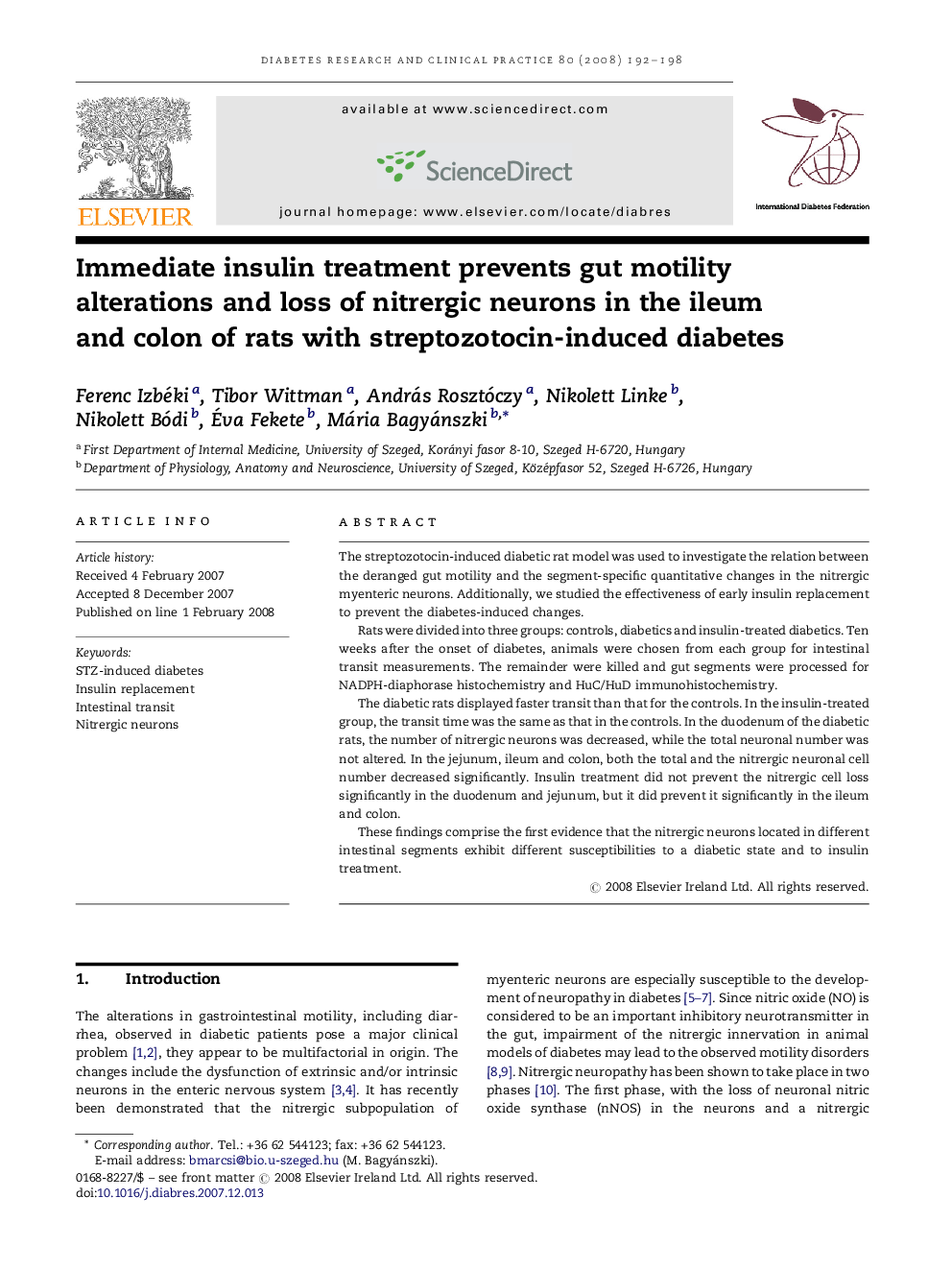| Article ID | Journal | Published Year | Pages | File Type |
|---|---|---|---|---|
| 2798342 | Diabetes Research and Clinical Practice | 2008 | 7 Pages |
The streptozotocin-induced diabetic rat model was used to investigate the relation between the deranged gut motility and the segment-specific quantitative changes in the nitrergic myenteric neurons. Additionally, we studied the effectiveness of early insulin replacement to prevent the diabetes-induced changes.Rats were divided into three groups: controls, diabetics and insulin-treated diabetics. Ten weeks after the onset of diabetes, animals were chosen from each group for intestinal transit measurements. The remainder were killed and gut segments were processed for NADPH-diaphorase histochemistry and HuC/HuD immunohistochemistry.The diabetic rats displayed faster transit than that for the controls. In the insulin-treated group, the transit time was the same as that in the controls. In the duodenum of the diabetic rats, the number of nitrergic neurons was decreased, while the total neuronal number was not altered. In the jejunum, ileum and colon, both the total and the nitrergic neuronal cell number decreased significantly. Insulin treatment did not prevent the nitrergic cell loss significantly in the duodenum and jejunum, but it did prevent it significantly in the ileum and colon.These findings comprise the first evidence that the nitrergic neurons located in different intestinal segments exhibit different susceptibilities to a diabetic state and to insulin treatment.
